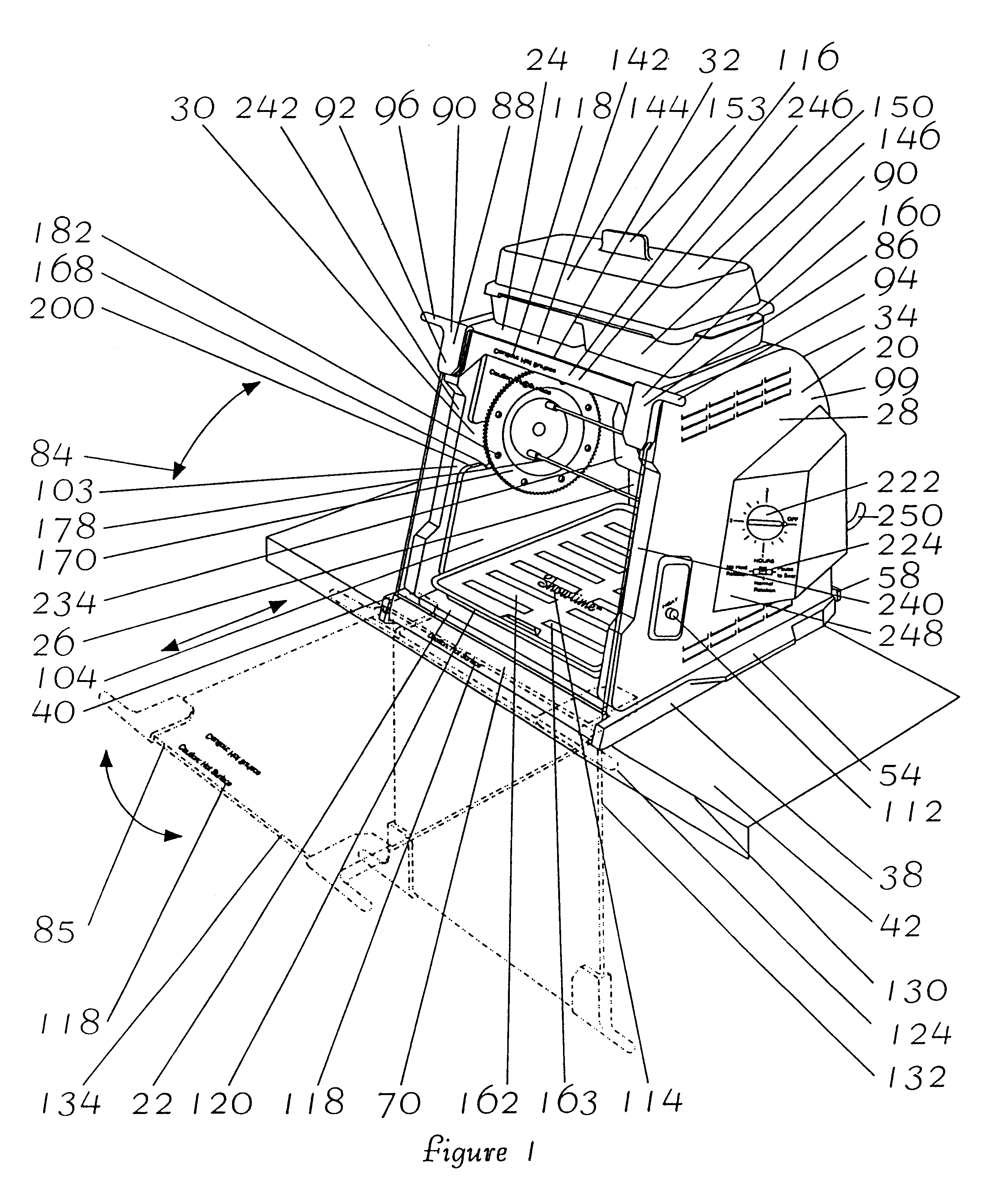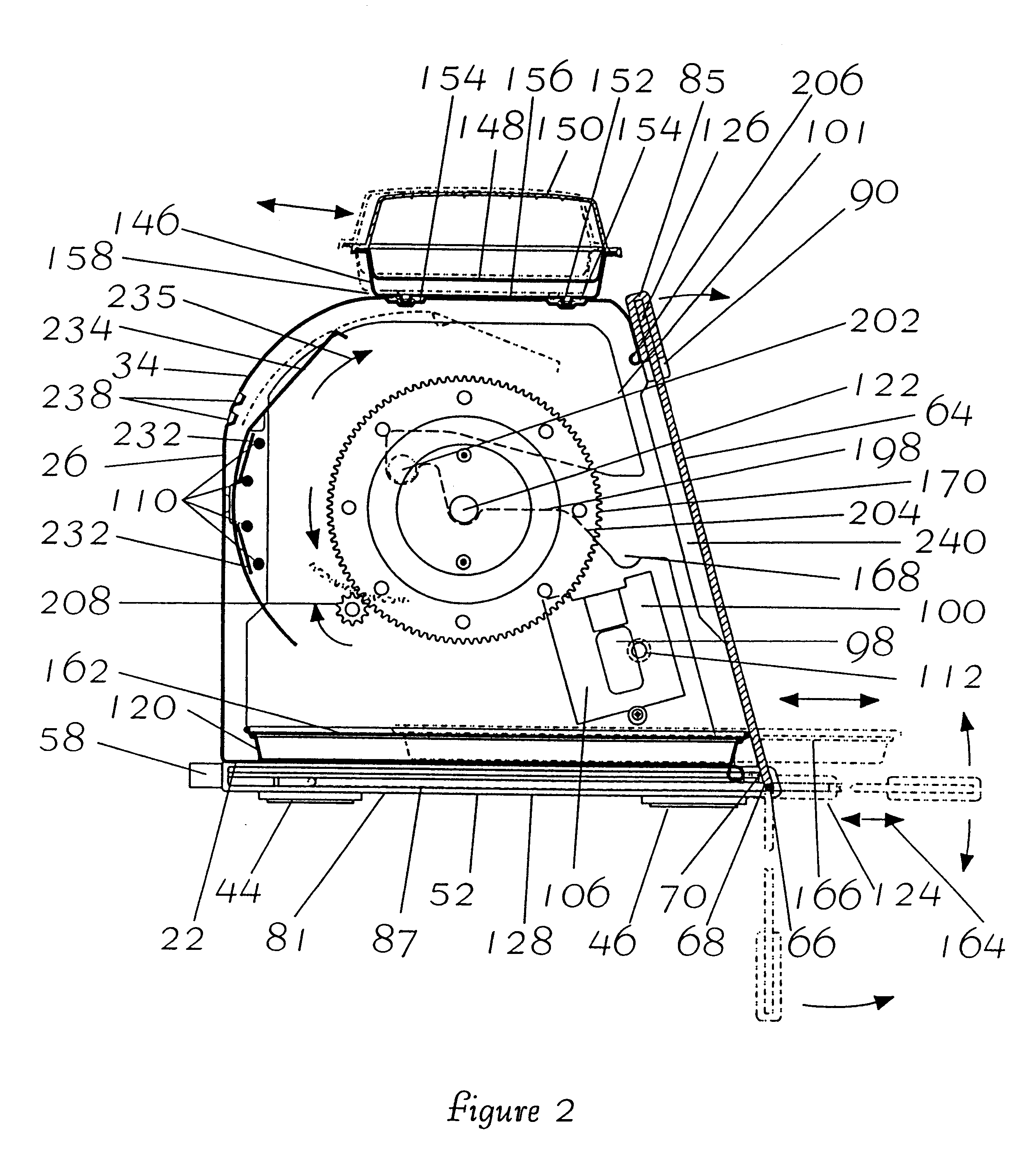Convenient food supporting vessel for use on a rotisserie cooking spit
a technology for a rotisserie cooking spit and a food support device, which is applied in the field of convenient food support devices for use on rotisserie cooking spits, can solve the problems of slow cooking, difficult to check cooking progress, and unhealthy grease and oil, so as to prevent user's hands from getting dirty or greasy, and simplify the handling of cooked food. , the effect of preventing the user from getting burned
- Summary
- Abstract
- Description
- Claims
- Application Information
AI Technical Summary
Benefits of technology
Problems solved by technology
Method used
Image
Examples
Embodiment Construction
A preferred embodiment of the present inventions comprises a countertop resting box-like enclosure housing a safety rear mounted heating element and a power rotated dual rod spit assembly.
The gear driven spit assembly may be easily inserted and removed straight into and out of the enclosure without need for angling or coupling the assembly to a power drive socket.
The spit assembly may also be mounted at various distances from the heating element to decrease cooking times.
The open front of the enclosure is from time to time covered by an inclined glass panel door which may be opened in various ways to facilitate food insertion into and removal from the enclosure, and which may be easily removed for cleaning or other purposes.
The embodiment's design makes efficient use of valuable counter space by recessing back and raising off the countertop its controls.
A contained light as well as room light emitted through the inclined glass door illuminate the enclosure's interior to make the rot...
PUM
 Login to View More
Login to View More Abstract
Description
Claims
Application Information
 Login to View More
Login to View More - R&D
- Intellectual Property
- Life Sciences
- Materials
- Tech Scout
- Unparalleled Data Quality
- Higher Quality Content
- 60% Fewer Hallucinations
Browse by: Latest US Patents, China's latest patents, Technical Efficacy Thesaurus, Application Domain, Technology Topic, Popular Technical Reports.
© 2025 PatSnap. All rights reserved.Legal|Privacy policy|Modern Slavery Act Transparency Statement|Sitemap|About US| Contact US: help@patsnap.com



